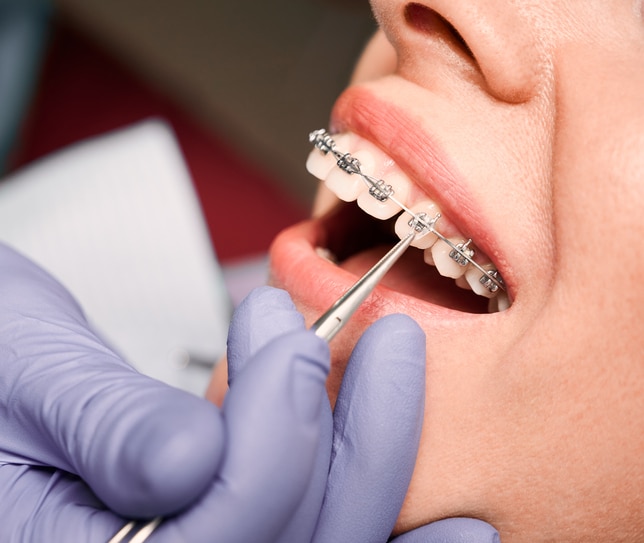Your Guide to Cumming Invisalign: Straightening Teeth with Style and Comfort
Your Guide to Cumming Invisalign: Straightening Teeth with Style and Comfort
Blog Article
Comprehensive Guide to Orthodontics Procedures for Fixing Dental Imbalances
Recognizing the intricacies of each procedure, including their mechanisms, advantages, and possible disadvantages, is critical in making notified decisions concerning one's orthodontic therapy. As we navigate through the comprehensive guide to orthodontic procedures for correcting oral misalignments, the complex information of each technique will unfold, dropping light on the path toward a useful and harmonious oral placement.
Orthodontic Procedures Review

Along with clear aligners and standard dental braces, orthodontists may additionally recommend various other treatments like headgear, palatal expanders, or retainers to address details placement concerns (cumming orthodontics). These procedures are customized per individual's distinct requirements and may involve a mix of therapies to achieve the wanted results. Normal adjustments and monitoring are crucial components of orthodontic treatment to make certain progression is on track and to make any type of essential adjustments along the way. By undergoing orthodontic procedures, clients can not only achieve a straighter smile however additionally enhance their total dental wellness and feature.
Traditional Dental Braces: Exactly How They Function
When considering orthodontic treatments for dental imbalances, traditional dental braces stand out as a tried and true approach for remedying teeth placing. Standard dental braces consist of braces, cords, and bands that work together to apply constant stress on the teeth, progressively relocating them into the desired placement.
As pressure is used to the teeth through the dental braces, the bone surrounding the teeth is reshaped to support the new tooth settings. People will certainly require regular adjustments at the orthodontist's workplace to make certain the dental braces continue to apply the correct pressure for reliable teeth movement.
Unnoticeable Aligners: Benefits And Drawbacks
Unseen aligners offer a discreet and practical option to standard braces for remedying dental misalignments. These clear, customized trays are essentially unseen when worn, making them an attractive alternative for individuals seeking a much more cosmetically pleasing orthodontic therapy. One of the primary benefits of unnoticeable aligners is their removability, enabling for less complicated upkeep of dental hygiene compared to conventional braces. Patients can get rid of the aligners before eating or cleaning their teeth, minimizing the threat of food getting stuck in the home appliance and simplifying the cleansing process.

Surgical Orthodontic Options
Surgical treatments in orthodontics present practical choices for resolving complicated dental misalignments that may not be effectively settled with traditional orthodontic therapies. While unnoticeable aligners and standard dental braces can correct many orthodontic issues, specific situations need surgical intervention to achieve optimal outcomes. Surgical orthodontic alternatives are usually suggested for serious malocclusions, substantial jaw inconsistencies, and cases where the underlying bone framework needs adjustment to attain appropriate alignment.
One common medical orthodontic treatment is orthognathic surgical procedure, which involves repositioning the jaws to deal with functional issues such as trouble speaking or chewing. This surgical treatment is frequently executed in cooperation with an orthodontist who aids align the teeth prior to and after the procedure. Surgical orthodontics may also include treatments to expose influenced teeth, remove excess periodontal tissue, or improve the jawbone to produce an extra harmonious face profile.
Before considering oral sedation dentistry medical orthodontic options, individuals undergo a thorough analysis to identify the necessity and possible advantages of such treatments. invisalign. While surgical treatment may appear overwhelming, it can dramatically improve both the feature and looks of the smile in cases where traditional orthodontic treatments drop short
Retainers and Post-Treatment Care

Failure to comply with post-treatment treatment instructions can result in regression, where the teeth gradually relocate back towards their original positions. Consistent retainer wear, good dental health, and normal oral examinations are essential for maintaining the outcomes achieved with orthodontic surgical procedure and making sure the lasting security of the fixed dental alignment.
Final Thought
Finally, orthodontic treatments offer various alternatives for fixing oral imbalances. Standard braces use steel braces and cables to change teeth right into correct placement. Unseen aligners give a more very discreet alternative however may not appropriate for all cases. Surgical orthodontic options are available for more extreme imbalances. Retainers are typically used post-treatment to keep the new alignment. Generally, orthodontic treatments can effectively improve dental health and wellness and linked here visual appearance.
As we browse via the comprehensive guide to orthodontic treatments for correcting dental misalignments, the detailed information of each method will unfold, shedding light on the path towards a functional and unified oral placement. - cumming orthodontist
One of the most usual orthodontic treatments is the use of dental braces, which consist of steel brackets and cords that use gentle stress to gradually shift teeth right into the preferred placement.When considering orthodontic therapies for oral misalignments, traditional dental braces stand out as a tried and true approach for fixing teeth placing. Furthermore, unseen aligners might not be ideal for complicated orthodontic issues that need more significant teeth indental activity, as they are usually recommended for light to moderate instances. Retainers are personalized orthodontic tools designed to hold teeth in their remedied positions after the completion of orthodontic treatment.
Report this page